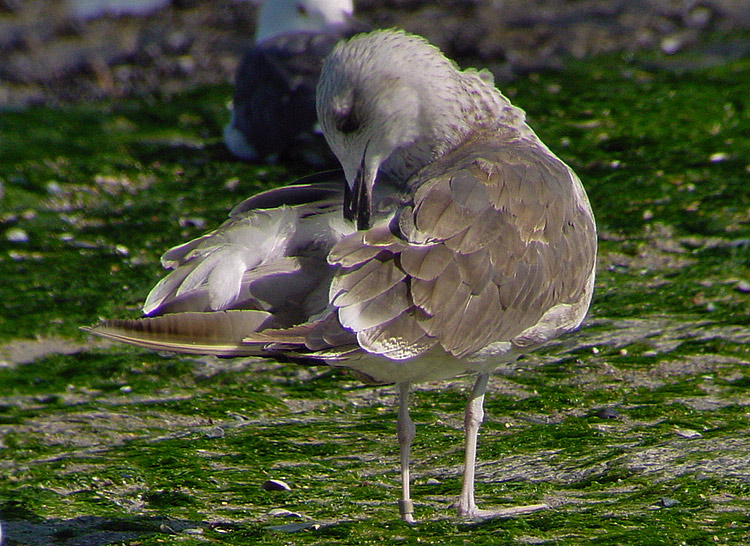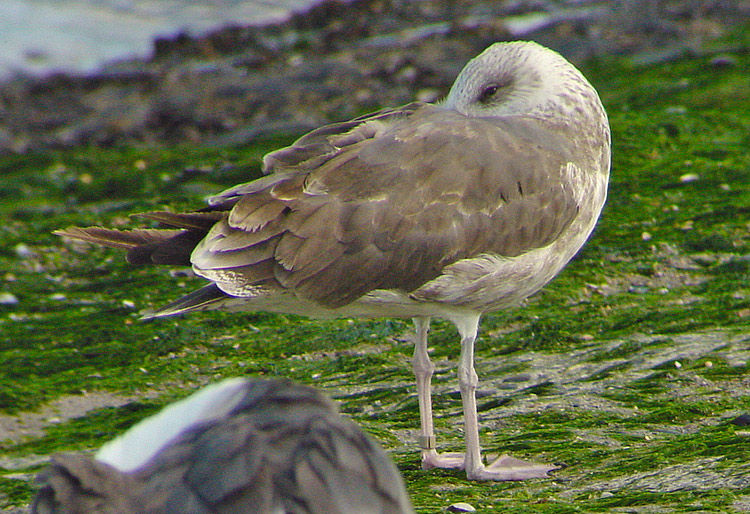 Lesser Black-backed Gull (graellsii & intermedius)
Lesser Black-backed Gull (graellsii & intermedius)
(last update: May 17 2015)
lbbg 1cy May
lbbg 1cy June
lbbg 1cy July
lbbg 1cy August
lbbg 1cy September
lbbg 1cy October
lbbg 1cy November
lbbg 1cy December
lbbg 2cy January
lbbg 2cy February
lbbg 2cy Mar-April
lbbg 2cy May
lbbg 2cy June
lbbg 2cy July
lbbg 2cy August
lbbg 2cy September
lbbg 2cy October
lbbg 2cy Nov - Dec
lbbg 3cy Jan-April
lbbg 3cy May
lbbg 3cy June
lbbg 3cy July
lbbg 3cy August
lbbg 3cy September
lbbg 3cy October
lbbg 3cy Nov - Dec
lbbg sub-ad Jan-April
lbbg sub-ad May
lbbg sub-ad June
lbbg sub-ad July
lbbg sub-ad Aug
lbbg sub-ad Sept
lbbg sub-ad Oct
lbbg sub-ad Nov
lbbg sub-ad Dec
lbbg adult January
lbbg adult February
lbbg adult March
lbbg adult April
lbbg adult May
lbbg adult June
lbbg adult July
lbbg adult August
lbbg adult September
lbbg adult October
lbbg adult Nov - Dec
(2 images) LBBG 2cy BLB L-?9892 August 15 2003, Westkapelle, the Netherlands.

A 2cy LBBG, ringed in Belgium: Brussels L-?9892. Showing an average moult gap in the primaries: P7 is fully grown and P10 is still juvenile. Secondaries #1-2 are fully grown, S3-7 are growing. Another wave in the secondaries seems to be started from the body outwards. The tail-feathers are almost completely replaced, with R5 still growing, but all other rectrices fully grown second generation.
In the wing-coverts, the last phase involves the central greater coverts and lesser coverts in the carpal edge. In the ordinary moult sequence, LBBG finish with about greater coverts #7-8 and the outermost lesser coverts in the upper row. As can be seen in the image, those coverts have been replaced. The visible greater coverts #1-12 are grey-based with an accentuated black shaft streak. Most median coverts have the same pattern, but #5 is still growing and #9 is an old retained second generation feather from the post juvenile moult. The growing median #5 is probably a recent replacement of another post-juvenile feather and is most probably third generation now. In the lower lesser coverts, another post-juvenile second generation feather (#1) can be found. Here, #4 is growing and #5-6 are missing. In the lesser coverts, two bleached brown and abraded post-juvenile second generation feathers can be seen as well. Tertials #-1-3 are grey-based, with the tip of #1 already slightly worn.
About 25% of the scapulars is almost plain grey, with a thin black shaft streak. The older lower scapulars are brown.
